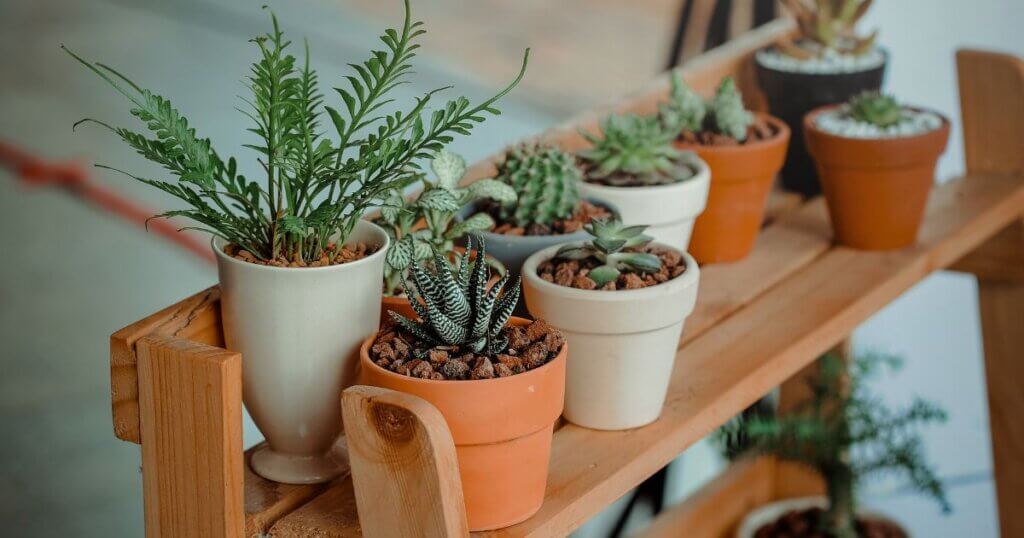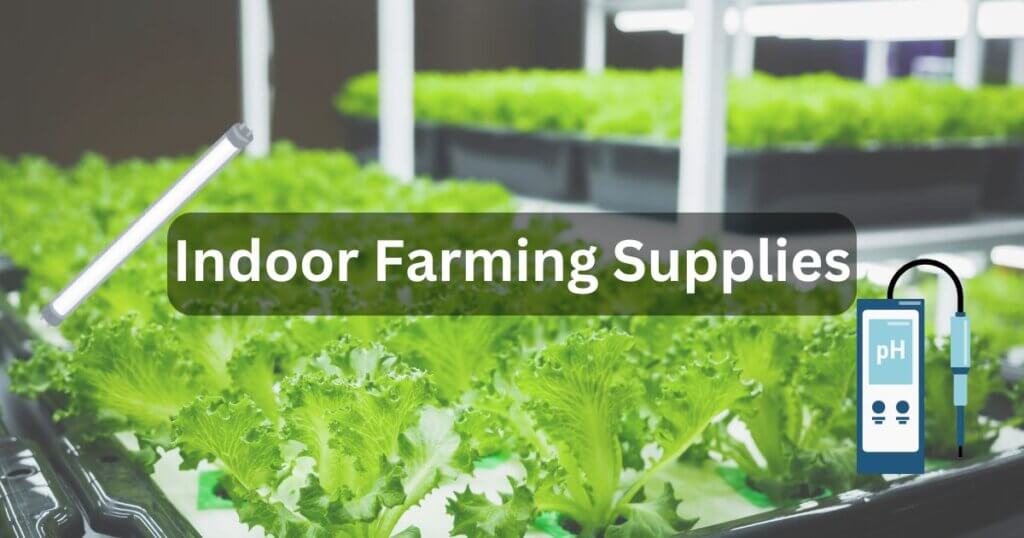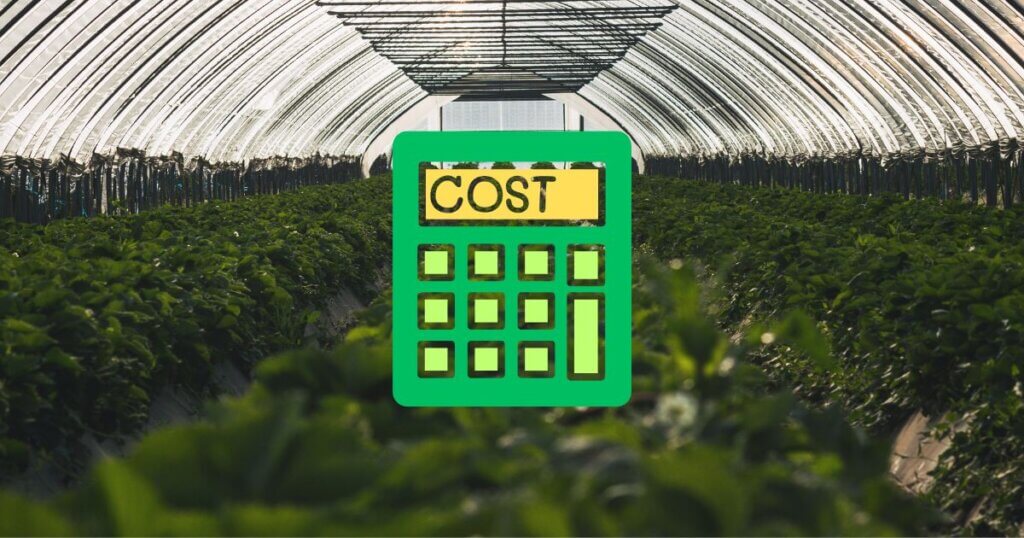10 Indoor Herb Plants to Transform Your Home Into a Green Paradise

Indoor Farming Hub is an Amazon Associate and earns from qualifying purchases.
Table of Contents
There’s something magical about having fresh herbs right in your home. Whether it’s snipping basil for a homemade pizza, mint for a refreshing tea, or thyme for a hearty soup, indoor herb plants elevate both your meals and your living space. Plus, they’re a joy to grow, bringing greenery, fresh scents, and a sense of accomplishment into your daily life.
Why Indoor Herb Plants Are a Must-Have for Your Home
Benefits of Growing Indoor Herb Plants
Growing herbs indoors isn’t just about convenience—though, let’s face it, being able to grab fresh parsley or rosemary from your kitchen windowsill is pretty awesome. These plants come with a ton of added benefits:
- Air Purification: Indoor herb plants, like other houseplants, act as natural air purifiers. They absorb carbon dioxide and release oxygen, improving air quality and making your home feel fresher.
- Aesthetic Appeal: The vibrant green of herb plants adds a natural, calming vibe to your home decor. Whether in minimalist pots or hanging planters, herbs can enhance any space.
- Sustainable Living: By growing your herbs, you’re cutting down on plastic waste from store-bought herbs and reducing your carbon footprint.
- Health Benefits: Fresh herbs pack more nutrients than dried versions. Plus, their scents, like the calming aroma of lavender or rosemary, can positively impact your mood.
Indoor Herb Gardening for Beginners
Think growing herbs indoors sounds tricky? Don’t worry—many herbs are beginner-friendly and thrive with minimal care. Start with low-maintenance plants like mint, basil, or parsley. These are forgiving even if you forget to water them occasionally.
Avoid these common beginner mistakes:
- Overwatering: Most herbs prefer slightly dry soil over constantly soggy conditions.
- Poor Lighting: Herbs need adequate light, so placing them near a sunny window is key.
A sleek, beginner-friendly herb planter kit that automatically waters your herbs, perfect for basil, mint, parsley, and more with the Click & Grow Smart Garden.
How to Choose the Best Indoor Herb Plants for Your Space
Factors to Consider
Before you rush to pick your herbs, consider these key factors:
- Light Availability: Herbs like basil and rosemary need 6-8 hours of sunlight daily, while plants like mint or parsley can thrive in lower-light areas.
- Space Constraints: If you’re tight on space, opt for compact plants like thyme or chives that fit neatly on a windowsill or small shelf.
- Maintenance Level: Are you a hands-on gardener or a “plant it and forget it” type? Choose herbs that match your commitment level.
Matching Herbs to Your Home Environment
Here’s a quick guide to matching herbs to your home setup:
- Bright Spaces: Basil, rosemary, oregano
- Moderate Light: Parsley, chives, cilantro
- Low Light: Mint, sage
Top 10 Indoor Herb Plants You Can Grow Year-Round
Basil – A Versatile Kitchen Staple
Basil is a must-have for any herb lover. Its sweet, peppery leaves add bold flavor to sauces, salads, and more. To grow basil indoors, place it in a sunny spot where it can receive 6-8 hours of light each day. Keep the soil moist but not waterlogged to encourage healthy growth. Regularly snip the top leaves to promote a bushier plant. For different culinary experiences, try growing varieties like Genovese basil for rich pesto or Thai basil for flavorful stir-fries.
Mint – Refreshing and Easy to Maintain
Mint is a fast-growing herb that brings a refreshing note to drinks and desserts. To manage its vigorous growth, it’s best to grow mint in its own pot to prevent it from overtaking other plants. Mint thrives in partial sunlight or indirect light and loves moisture, so ensure its soil stays consistently damp. Peppermint is perfect for soothing teas, while spearmint makes an excellent addition to cocktails and garnishes.
Thyme – The Aromatic Powerhouse
Thyme is a hardy herb ideal for indoor growing, especially since it thrives in dry conditions. Known for its aromatic qualities, thyme is a favorite addition to roasted meats and vegetable dishes. It requires bright light for at least six hours daily, and the soil should be allowed to dry out between waterings. Using creeping thyme varieties can create a beautiful cascading effect in your pots, adding both beauty and flavor to your space.
Parsley – A Nutritional Powerhouse
Parsley is much more than a decorative garnish; it’s a nutritional powerhouse packed with vitamins A, C, and K. Parsley adapts well to partial shade but flourishes best under bright, indirect light. Keep its soil consistently moist to support lush growth. For versatility, consider growing both flat-leaf parsley, which is excellent for cooking, and curly parsley, which works wonderfully as a garnish.
Rosemary – A Hardy, Fragrant Herb
Rosemary is a hardy, fragrant herb that infuses dishes with a woodsy aroma and doubles as a natural air freshener for your kitchen. It thrives when placed in the brightest spot available and prefers its soil to dry out between waterings. To keep rosemary compact and bushy, regular pruning is recommended, ensuring a healthy plant that remains manageable indoors.
Chives – A Delicate Onion-Like Flavor
Chives are among the easiest herbs to grow and offer a delicate onion-like flavor that complements eggs, salads, and dips. They prefer bright light but can tolerate some shade. Water chives when the top layer of soil feels dry, and when harvesting, use scissors to snip the leaves rather than pulling the plant from its roots, which helps it continue producing.
Cilantro – Perfect for Fresh Salsas
Cilantro is the perfect herb for lovers of fresh guacamole and salsa. With its short life cycle, cilantro needs to be replanted regularly to ensure a continuous harvest. It requires at least 4-6 hours of sunlight daily and needs consistently moist soil to thrive. Both the stems and seeds—known as coriander—can be used to add extra layers of flavor to a wide range of dishes.
Oregano – Pizza’s Best Friend
Oregano is the bold, earthy herb that no Italian or Mediterranean dish should be without. It demands bright, direct sunlight for about six hours daily and prefers the soil to dry between waterings. To maintain flavorful leaves, pinch off any flowers that appear, ensuring the plant focuses its energy on growing rich, aromatic foliage.
Dill – The Herb for Pickles and More
Dill’s feathery leaves are famous for their role in pickling but also enhance the flavor of soups, fish dishes, and dips. Dill grows best under bright light or with the help of grow lights. Its soil should remain consistently moist to keep the herb healthy. Fresh dill fronds are ideal for immediate use, while the seeds can be harvested and saved for pickling purposes.
Sage – Earthy and Robust
Sage is a robust herb with velvety leaves that add an earthy depth to savory dishes like stuffing and pasta. It thrives in sunny spots but is also tolerant of moderate light conditions. Allow the soil to dry between waterings, and prune the plant regularly to encourage strong, bushy growth that keeps your indoor garden vibrant and productive.
Essential Tips for Thriving Indoor Herb Gardens
Best Lighting Solutions for Indoor Herbs
Herbs like basil and rosemary thrive best in bright, direct sunlight for several hours a day. Meanwhile, mint and parsley are more forgiving and can grow well in partial or indirect light. If your home doesn’t get enough natural sunlight, consider investing in LED grow lights to mimic the sun’s rays. Position the lights about 6–12 inches above your plants and run them for 12–16 hours daily to ensure healthy growth.
A full-spectrum, adjustable LED grow light that mimics natural sunlight to keep your herbs thriving year-round, even in darker homes with the GE BR30 Full Spectrum LED Grow Light.
Watering Basics and Tricks
Overwatering is one of the biggest killers of indoor herbs, often leading to root rot and plant diseases. A good rule of thumb is to stick your finger about an inch into the soil to check for dryness before watering. If it feels dry at that depth, it’s time to water thoroughly but gently. Always use pots with drainage holes to allow excess water to escape and keep the roots healthy.
Choosing the Right Soil for Herbs
Well-draining soil is essential for keeping herb plants healthy and thriving indoors. Choose a potting mix that’s specifically designed for herbs, as it provides the right texture and nutrients. You can also make your own by mixing regular potting soil with sand, perlite, or vermiculite to improve drainage. Healthy soil prevents water from pooling at the roots and reduces the risk of fungal diseases.
A high-quality organic potting mix specially formulated for herbs and indoor plants, ensuring healthy root development and growth with Miracle-Gro Indoor Potting Mix.
How to Fertilize Indoor Herb Plants Without Overdoing It
Feeding your herbs with an organic fertilizer once a month can significantly boost their growth and flavor. However, avoid over-fertilizing because it can cause herbs to grow tall and spindly with weak, diluted flavors. Always follow the instructions on the fertilizer package and opt for a diluted solution if you’re unsure. Strong, compact herbs with vibrant leaves are a sign you’re fertilizing just right.
Common Problems and How to Solve Them
Dealing with Pests on Indoor Herbs
Indoor herbs can sometimes attract pests like aphids, spider mites, and whiteflies, even in a clean environment. Early detection is key, so inspect your plants regularly, especially under the leaves. Combat pests naturally by using neem oil sprays or by rinsing the leaves thoroughly with water. Keeping your herbs healthy and stress-free also makes them less susceptible to infestations.
Preventing Diseases in Indoor Herb Plants
Good airflow is essential to prevent common issues like mold, mildew, and fungal infections on indoor herbs. Make sure not to overcrowd your plants, and space them out to allow air to circulate freely. Always remove any dead, yellowing, or diseased leaves as soon as you notice them to stop the spread of disease. Using clean pots and sterilized soil also helps reduce the risk of infections.
A natural neem oil spray that protects herbs from pests like aphids, mites, and fungal diseases without harmful chemicals with Garden Safe Neem Oil Extract.
What to Do When Herbs Stop Growing
If your herbs suddenly stop growing or look stunted, the first thing to check is the health of their roots. Often, herbs become root-bound, meaning they’ve outgrown their pots and need more space. Gently repot them into a larger container with fresh, nutrient-rich soil to encourage healthy new growth. Also, check if they are getting enough light, water, and nutrients, as deficiencies can also halt their development.
Creative Ways to Use Indoor Herb Plants
Herbs are more than just garnishes—they can completely transform everyday dishes with fresh flavor and aroma. From basil-infused oils on salads to herb butters that elevate bread and baked potatoes, their uses are endless. Fresh herbs like rosemary, dill, and parsley add bright, bold tastes to soups, stews, roasted vegetables, and seafood. Pro tip: freeze chopped herbs in olive oil using ice cube trays for quick, flavorful meal additions.
A foldable, space-saving herb drying rack that allows you to dry and preserve your homegrown herbs naturally with the Stack!t 3 ft Herb Drying Rack.
DIY Herb Decor Ideas
Herbs can be more than practical—they can also be stunning decor pieces that breathe life into your home. Hang them in stylish macramé planters near a sunny window, where their cascading greenery doubles as a design statement. Repurpose mason jars or vintage teacups as herb planters for a rustic or eclectic look. Herbs like lavender or thyme can be dried and arranged in bouquets for a fragrant, decorative touch. You could even create a small vertical herb garden using a wooden pallet or mounted wall planters to save space while adding visual interest to your kitchen or living area.
Herbal Remedies and Skincare
Indoor herbs aren’t just for the kitchen—they’re also natural remedies and beauty boosters. Mint and chamomile are perfect for making calming teas that aid digestion and reduce stress. Fresh rosemary can be steeped in hot water to create a fragrant hair rinse that promotes scalp health and shine. Lavender can be infused into oils or balms for soothing skin treatments, perfect for relaxing massages or relieving minor burns. Aloe vera, while not technically a traditional herb, is a must-have plant that pairs beautifully with an herb collection and can be used directly for moisturizing skin or soothing sunburns.
Conclusion
Indoor herb gardening is more than a hobby—it’s a lifestyle upgrade that fills your home with fresh scents, vibrant greenery, and flavorful ingredients. Caring for herbs brings relaxation and joy, while also purifying the air and adding natural beauty to your space. These versatile plants can be used for cooking, natural remedies, skincare, and creative home decor, enriching your life in unexpected ways. Starting is simple and rewarding, so why wait when your home, health, and taste buds will thrive with an indoor herb garden?
Indoor Herb Plants – FAQs
1. Can I grow herbs indoors all year round?
Yes, most herbs can be grown indoors year-round if they are provided with the right conditions, such as sufficient light, consistent temperature (65–75°F), and proper care.
2. What type of pots or containers are best for indoor herbs?
Pots with drainage holes are essential for healthy herbs. Terracotta, ceramic, or plastic pots work well. Self-watering pots are also a great option for maintaining consistent moisture.
3. How can I fertilize indoor herbs?
Indoor herbs benefit from light feeding every 4–6 weeks. To provide nutrients, use a diluted, all-purpose liquid fertilizer or an organic option, such as fish emulsion or compost tea.
4. Why are my indoor herbs growing slowly?
Slow growth can result from insufficient light, inadequate watering, or nutrient deficiencies. Make sure the herbs are in a bright spot, water appropriately, and use well-balanced soil.
5. Can I propagate indoor herbs to grow more plants?
Yes, many herbs like basil, mint, rosemary, and thyme can be propagated through cuttings. Simply cut a healthy stem, place it in water until roots develop, and then plant it in the soil.
other useful resources related to indoor herb plants
- Your Ultimate Guide to Growing Herbs Indoors (EatingWell)
This guide provides tips on selecting the right spot, ensuring adequate sunlight, and maintaining your herbs. - How to Grow Herbs Indoors Year-Round (Better Homes & Gardens)
Learn advice on positioning your herbs for optimal sunlight and care techniques to keep them thriving. - Growing Herbs Indoors (Penn State Extension)
Offers detailed information on temperature requirements and general care for indoor herbs. - How to Grow Herbs Indoors (Bonnie Plants)
Discusses drainage, suitable indoor temperatures, and alternative growing methods like hydroponics. - The 7 Best Indoor Herb Gardens, Tested and Reviewed (The Spruce)
Reviews top indoor herb garden kits, helping you choose the best setup for your needs.
some interesting Indoor herb Plant videos









